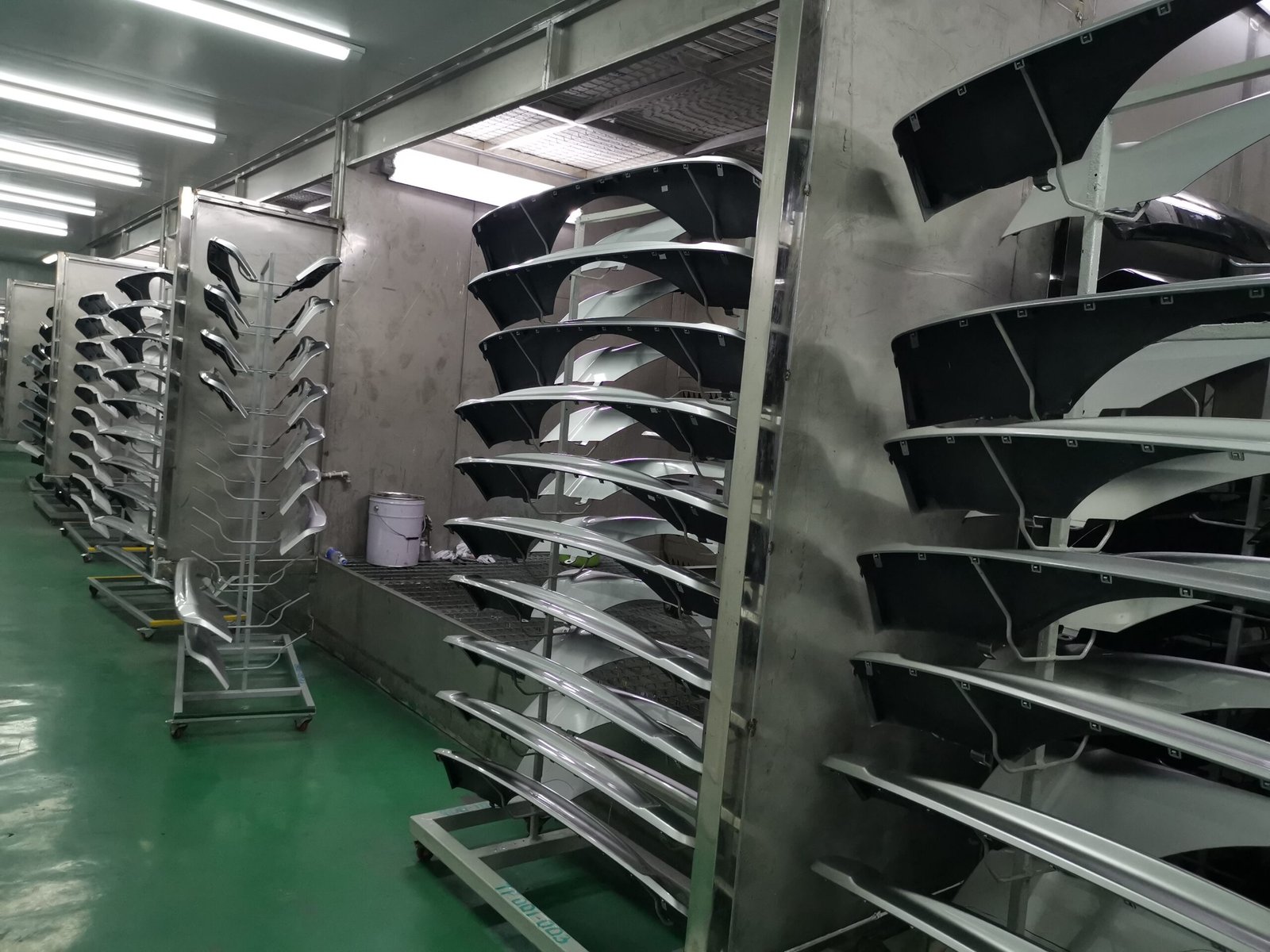Overview of Automotive Aluminum Wheel Coating Line as an Example
The spraying production line for automotive aluminum wheels is a sophisticated system that combines advanced technology and precise processes to ensure durability, quality, and aesthetic appeal. Below is a simplified overview of its major stages:
- Pretreatment Line: Surface Preparation
The pretreatment line ensures a clean and prepared surface for coating. Key steps include:
Cleaning and Degreasing: Hot water washing, pre-degreasing, and main degreasing.
Rinsing: Multiple rounds of acid washing, pure water rinsing, and passivation.
Drying: Water dripping/blowing, drying in a water-drying oven, and natural cooling before robotic transfer. - Bottom Powder Line: Durable Base Coating
The bottom powder line applies a strong and durable base coat. The process involves:
Robotic dust removal and powder spraying.
Artificial powder absorption and fixture cleaning.
Powder solidification, cooling, and robotic transfer to the next stage. - Bright Powder Line: Glossy Finish
This stage adds a shiny, visually appealing finish:
Robotic dust removal and powder spraying.
Artificial powder absorption and fixture cleaning.
Powder solidification, cooling, and quality inspection. - Painting Line: Protective and Decorative Topcoat
The final stage applies the protective and decorative topcoat:
Preparation: Robotic grinding, dust removal, and preheating.
Primer Application: Even primer spraying and leveling.
Topcoat Application: Varnish spraying, leveling, curing, and cooling.
Final Inspection: Ensuring a flawless finish. - Innovations and Energy Efficiency
The production process incorporates several innovations to improve quality and efficiency:
Electrophoresis Priming: Enhances primer adhesion and strength.
Line Separation: Powder-spraying and drying lines are separated to prevent contamination.
Robotic Parts Rotation: Improves precision and reduces residual powder impact.
Waste Heat Utilization: Heat from pretreatment exhaust dries hubs, saving energy and reducing costs. - Equipment and Key Parameters
Specialized equipment ensures precision and efficiency:
Curing Furnaces: Bridge curing furnaces operate at 180–220°C with a drying time of 48–50 minutes.
Cooling Systems: Use cross-chain structures for stability and efficiency.
Climbing Angle: Recommended at 8–10 degrees to avoid excessive chain friction and fixture load.





